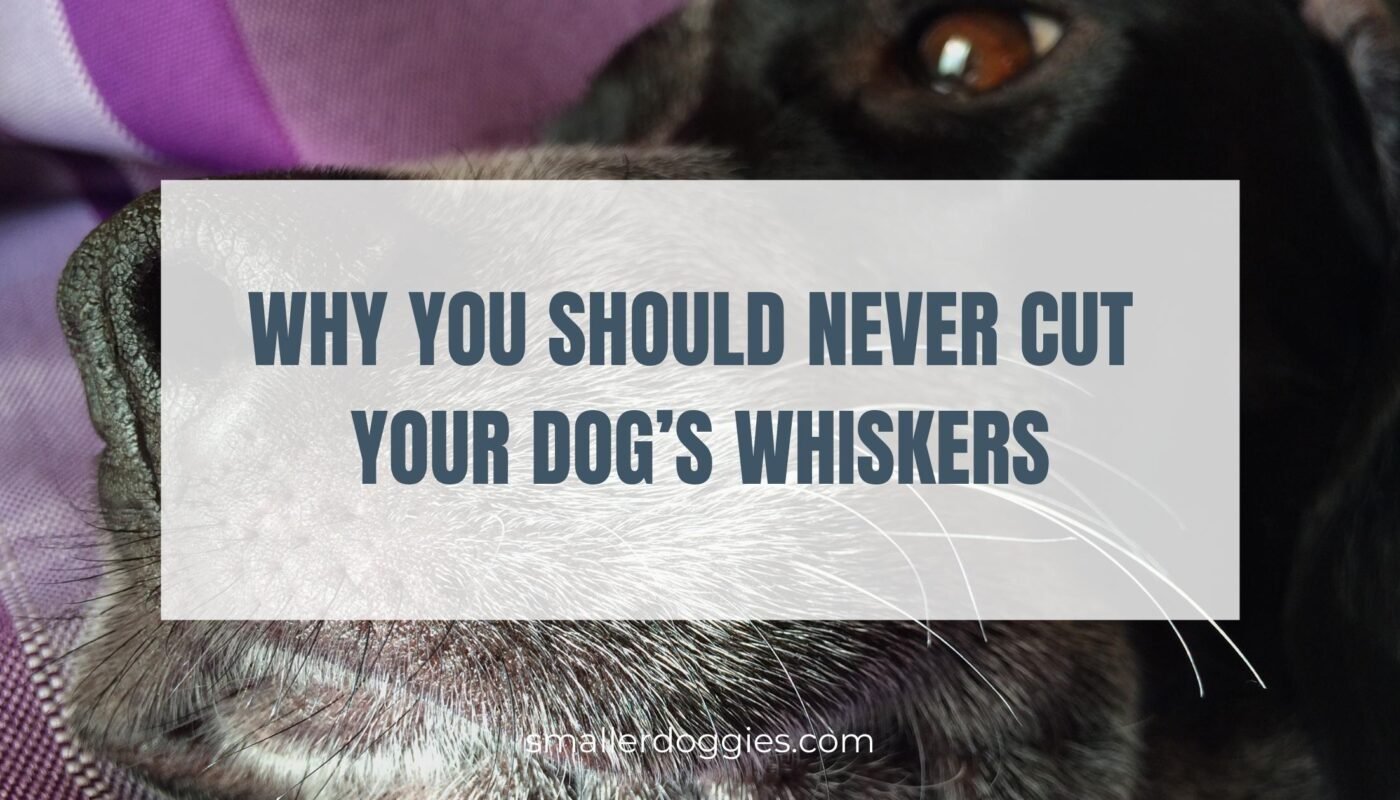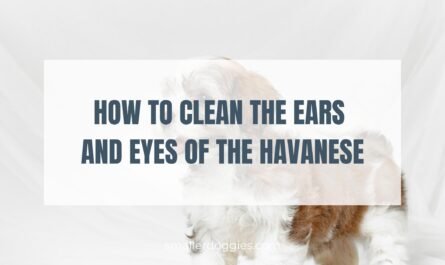Post Disclaimer
This post may contain affiliate links. If you use these links to buy something we earn a commission at no extra cost to you. Smaller Doggies is supported by its audience, Thank you!
When you look at your dog’s face, you might notice the long and sturdy whiskers. These whiskers are not just for looks; they play a crucial role in your dog’s life. Many people mistakenly believe that whiskers are unimportant and decide to have them cut during grooming sessions.
Your dog’s whiskers help them navigate the world, acting as sensory tools. They detect changes in the environment and can help your dog avoid obstacles. By understanding the importance of these whiskers, you can make better choices for your pet’s health and well-being.

What Are Whiskers?
Dog whiskers, also called vibrissae, are special hairs found on a dog’s jaw and above its eyes. These whiskers are different from regular hair because they are full of nerve endings. These nerve-filled follicles send sensory messages to the brain, helping dogs understand their surroundings and navigate in the dark.
Whiskers help dogs detect the size and shape of objects. They even respond to air currents, giving dogs extra information about their environment. These sensitive whiskers can be black, gray, or white and should never be plucked or clipped, as this can be painful and confusing for the dog.
Whiskers are grouped into different categories based on their location. For example, muzzle whiskers are around the mouth, while genal whiskers are on the cheeks. All dogs have these tactile, touch-sensitive whiskers that act as sensory organs and protective mechanisms.
Is it okay to touch a dog’s whiskers?
It is generally fine to touch a dog’s whiskers lightly. You can pat them gently, moving your hand down along the whisker rather than against it. Whiskers are extremely sensitive because they are deeply connected to the dog’s sensory perception. They help dogs detect vibrations and communicate changes in their environment, which is crucial for their spatial awareness and balance.
Important Considerations:
- Avoid plucking or tugging: This can cause pain and harm the whiskers’ sensitive roots.
- Do not clip or trim whiskers: Doing so can reduce a dog’s spatial awareness, leading to confusion and distress.
- Gentle handling: Light touches are acceptable, but always be gentle since whiskers play a critical role in a dog’s sensory system.
Maintaining your dog’s whiskers properly ensures they can continue to navigate and interact with their environment effectively.
Why do dog groomers cut off dog’s whiskers?
Dog groomers sometimes cut off a dog’s whiskers, believing it’s necessary for proper grooming. They are often taught this in grooming school, but it’s a common misconception. Many groomers aim for an aesthetically pleasing look, thinking trimmed whiskers contribute to that. It’s important to communicate your preference to your groomer if you don’t want your dog’s whiskers cut. Remember, whiskers are essential for a dog’s spatial awareness and overall animal welfare. Different breeds may have varied whisker lengths, but they all play a crucial sensory role.
What are the long hairs above my dog’s eyes?
The long hairs you see above your dog’s eyes are actually known as supraorbital whiskers or eyebrows. These hairs serve several important functions. Firstly, they act as a barrier to keep debris and moisture from entering your dog’s eyes, which can help prevent irritation or injury. Secondly, they help shield your dog’s eyes from the sun, providing some protection from bright light.
Moreover, these whiskers are sensitive and can detect changes in the environment, helping your dog navigate and maintain peripheral vision. For instance, if something comes too close to your dog’s face, the whiskers can sense it, allowing the dog to react quickly. It’s important not to cut or trim these hairs, as they are vital for your dog’s safety and overall well-being. Letting the whiskers remain intact helps your dog explore the world around them and stay safe.
If you have found yourself considering trimming these whiskers, remember that doing so could negatively impact your dog’s vision and interaction with their surroundings.
Frequently Asked Questions
What can happen if you trim your dog’s whiskers?
Trimming a dog’s whiskers can cause them to become disoriented and stressed. Whiskers are key sensory tools that help dogs navigate their environment and sense nearby objects. Cutting them can impede these abilities and lead to confusion and discomfort.
Do dogs feel pain when their whiskers are cut?
Yes, dogs can feel pain if their whiskers are cut. The base of each whisker has many nerve endings, making them sensitive. Trimming whiskers may cause your dog discomfort and stress.
How does the removal of whiskers impact a dog’s sensory abilities?
A dog’s whiskers are crucial for sensing their environment. They help them detect changes in their surroundings, find their way, and even measure gaps. Without whiskers, a dog may have difficulty with these tasks, leading to a decreased ability to navigate and interact with their world.
How do the functions of dog whiskers differ from those of cat whiskers?
While both dogs and cats use their whiskers to sense their environment, cats rely on theirs even more for precise movements and hunting. Dog whiskers are broader sensory tools, helping with navigation and spatial awareness, but not as finely tuned for hunting as those of cats.
What are your views on this? Share in the comments bar below.






